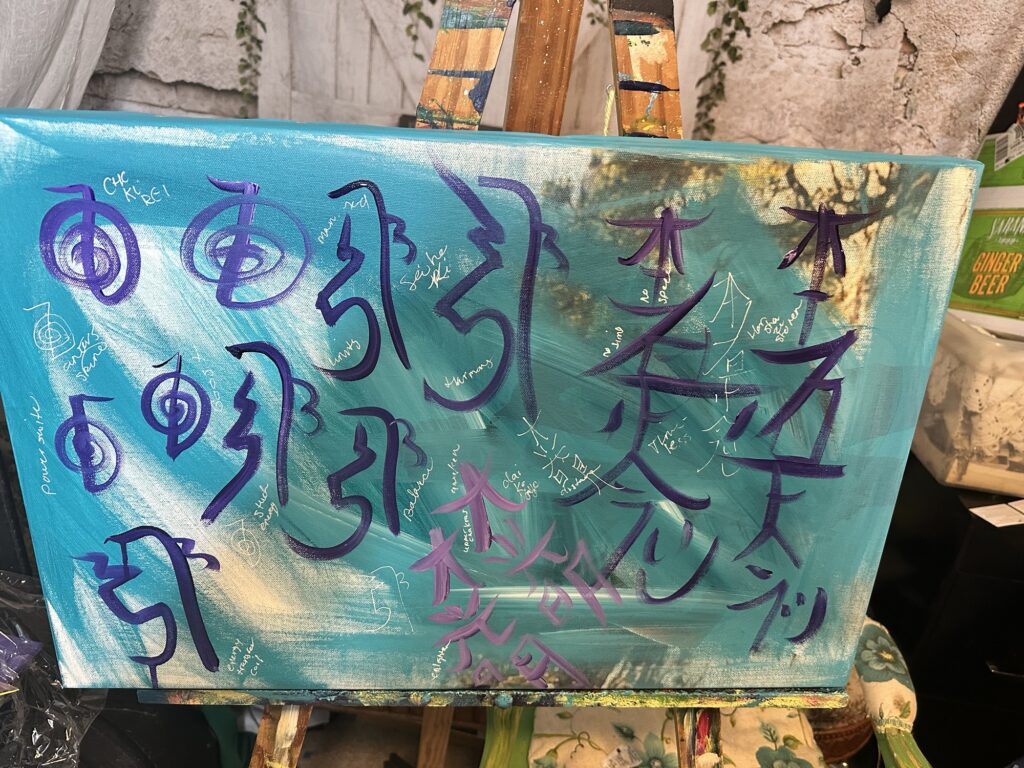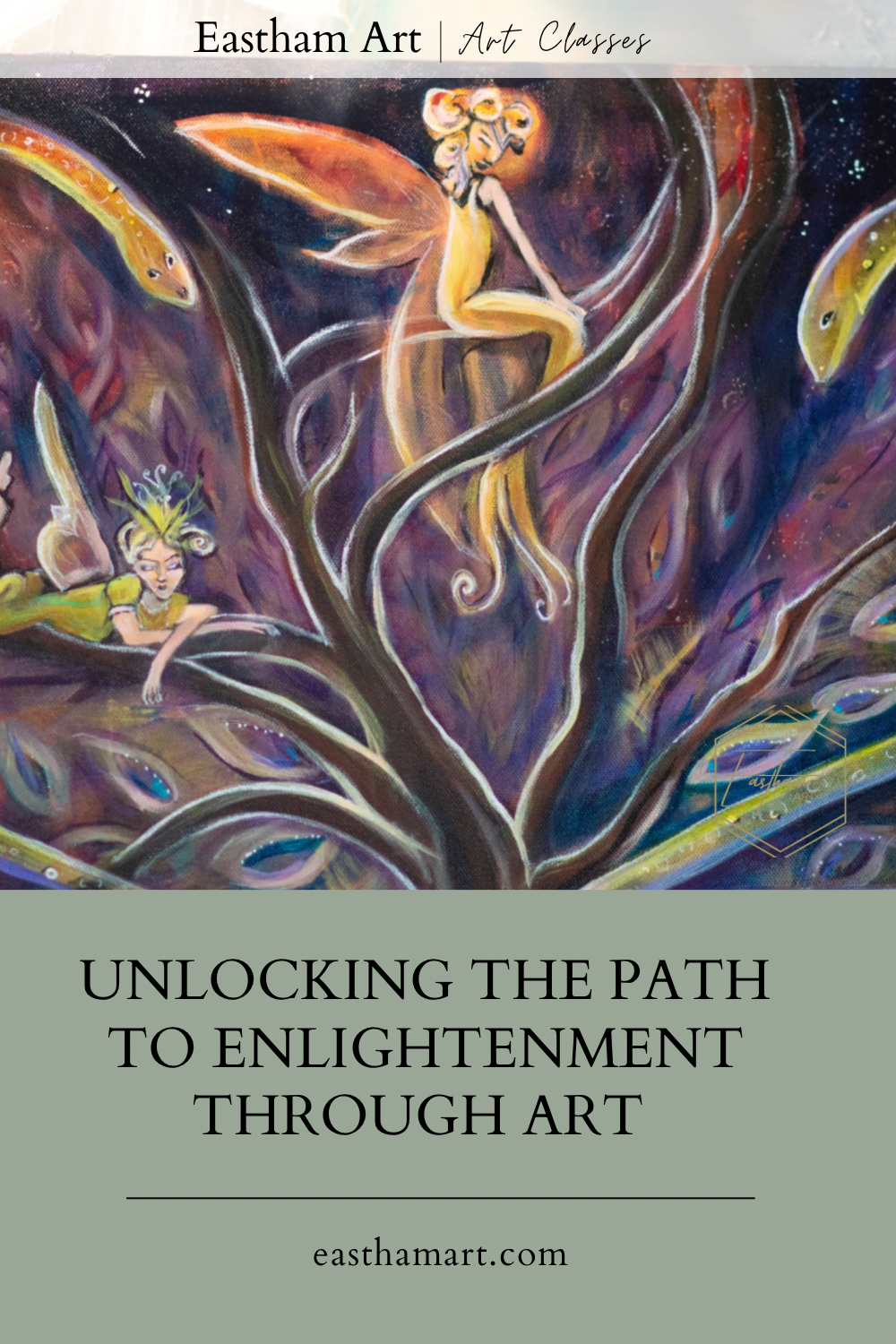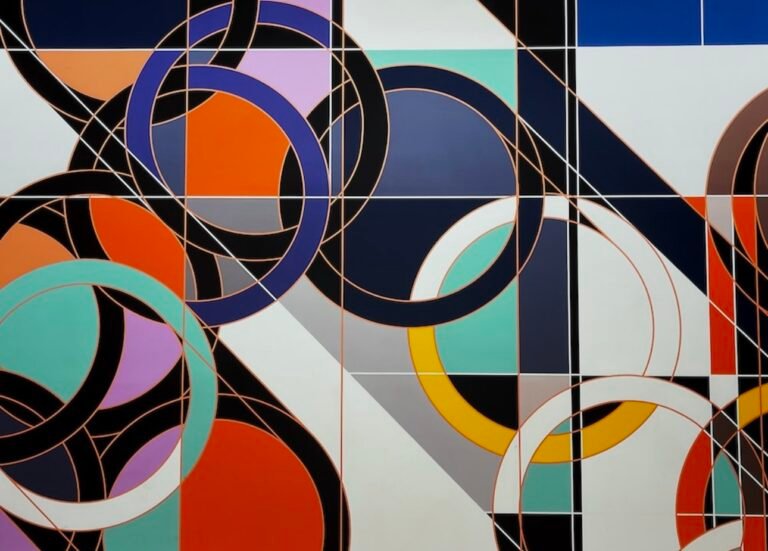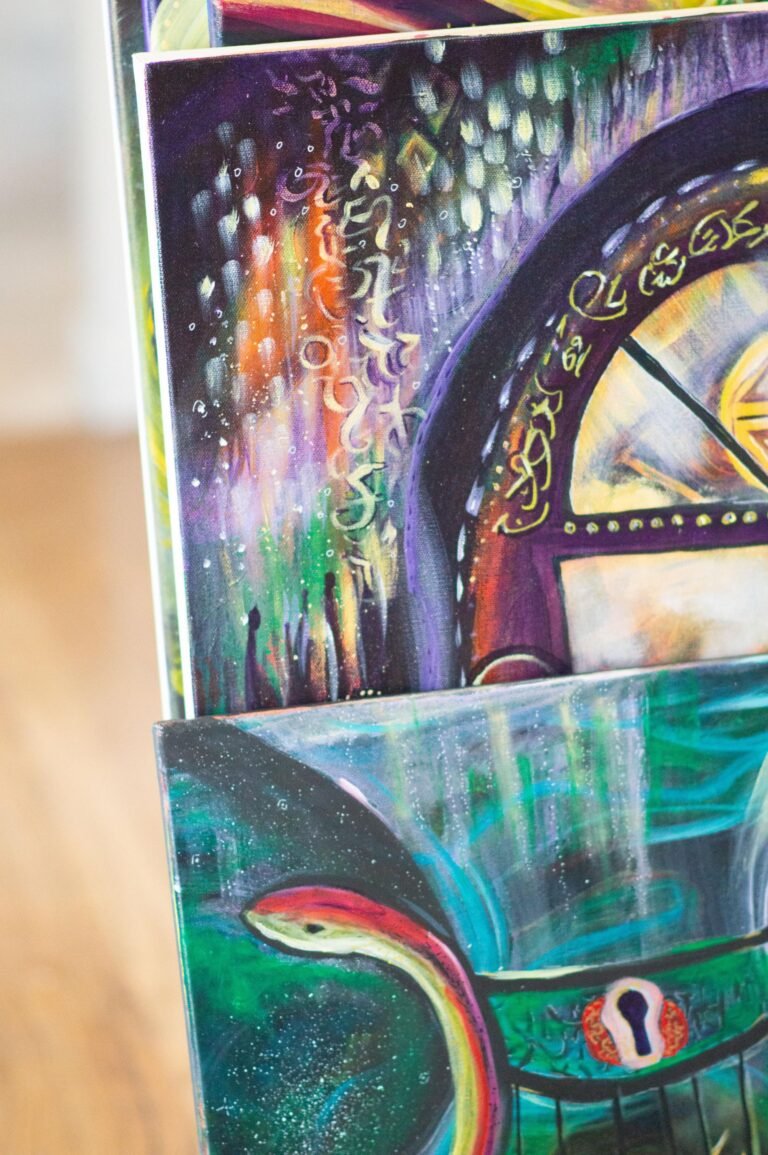Unlocking the Path to Enlightenment: Exploring the Sacred Connection Between Art and Spirituality

Exploring the Sacred Connection Between Art and Spirituality: Introduction
In a world driven by materialism and technology, the search for spiritual fulfillment has become more important than ever. Many individuals are turning to art as a means to unlock the path to enlightenment and explore the sacred connection between creativity and spirituality. From ancient cave paintings to intricate religious iconography, art has long been intertwined with religious and spiritual practices. It has the power to evoke emotions, inspire introspection, and provide a gateway to the divine.
This article delves into the profound relationship between art and spirituality, showcasing how various art forms, such as painting, sculpture, and music, can help individuals tap into a higher consciousness. Through the exploration of renowned works of art, we will uncover the underlying spiritual messages conveyed by the artists and the transformative impact they have on viewers.
By understanding the spiritual dimensions of art, we can gain a deeper appreciation for its ability to transcend the physical and touch our souls. Join us on this enlightening journey as we delve into the sacred connection between art and spirituality and unlock the hidden truths that lie within the world of creativity.
The Role of Symbolism in Spiritual Art
Art has long been a vehicle for expressing the ineffable, the divine, and the spiritual. One of the ways artists communicate these deeper meanings is through symbolism. Symbolism in art allows for the representation of abstract concepts and spiritual truths that cannot be easily put into words.
Throughout history, artists have utilized symbols to convey spiritual ideas, beliefs, and experiences. From the use of religious icons to the representation of mythical creatures, symbolism in art serves as a bridge between the physical and the metaphysical. These symbols often hold deep cultural significance and act as visual cues that invite viewers to explore their own spiritual understanding.
For example, in Christian art, the cross is a powerful symbol representing the sacrifice and redemption of Jesus Christ. Its presence in paintings and sculptures serves as a reminder of the spiritual journey and the ultimate goal of salvation. Similarly, the lotus flower in Buddhist art symbolizes purity and enlightenment, representing the journey towards spiritual awakening.
Symbolism in spiritual art not only enhances the aesthetic experience but also guides viewers towards a deeper understanding of the divine. By engaging with these symbols, individuals are encouraged to reflect on their own spiritual beliefs and experiences, fostering a connection to something greater than themselves.
The Power of Creativity in Spiritual Expression
Creativity is a fundamental aspect of the human experience, and it plays a vital role in spiritual expression. When individuals engage in creative activities, they tap into their innate ability to connect with the divine. Whether it’s painting, writing, dancing, or playing an instrument, artistic endeavors allow for the exploration and expression of the soul.
Artistic expression provides a channel for individuals to transcend the limitations of the physical world and access higher realms of consciousness. When artists create, they enter a state of flow where time seems to disappear, and they become one with their art. This state of flow is often described as a spiritual experience, where the artist feels connected to a higher power or source of inspiration.
For individuals engaging in artistic practices as a means of spiritual expression, the act of creating becomes a form of meditation. It allows them to quiet their minds, let go of the ego, and connect with their inner selves. This connection to the creative process opens up a pathway to spiritual growth and self-discovery.
Art as a Tool for Meditation and Self-Reflection
Meditation is a powerful tool for spiritual growth and self-awareness. It helps individuals quiet the mind, cultivate inner peace, and connect with their true nature. While traditional forms of meditation often involve sitting in stillness and focusing on the breath, art can also serve as a transformative meditative practice.
When engaging with art, whether as a viewer or a creator, individuals enter a state of mindful presence. They become fully immersed in the artwork, allowing themselves to be absorbed by its colors, textures, and forms. This focused attention on the artwork becomes a form of meditation, where the mind becomes calm and centered.
Art also serves as a mirror, reflecting back to individuals their own thoughts, emotions, and experiences. When viewing a piece of art, individuals may find themselves resonating with the emotions conveyed by the artist. This resonance acts as a catalyst for self-reflection, allowing individuals to explore their own inner landscapes and gain insights into their spiritual journey.
For those who engage in creating art as a meditative practice, the act of bringing their inner vision to life becomes a form of self-expression and self-discovery. The creative process becomes a space for exploration, healing, and transformation, enabling individuals to access deeper layers of their being and connect with their spiritual essence.
The Healing and Transformative Properties of Spiritual Art
Art has the power to heal and transform both individuals and communities. When individuals engage with spiritual art, it can evoke a range of emotions, from awe and wonder to introspection and catharsis. These emotional responses have the potential to initiate healing and transformation on a deep level.
Spiritual art often speaks to the universal human experience, addressing themes of love, loss, suffering, and transcendence. By engaging with these themes, individuals are invited to confront their own fears, doubts, and pain. Through this confrontation, healing can occur as individuals acknowledge and release emotional burdens.
Art also has the ability to expand consciousness and shift perspectives. When individuals encounter art that challenges their preconceived notions or expands their understanding of the world, it can lead to a shift in consciousness. This shift opens up new possibilities for personal growth and transformation.
Furthermore, spiritual art can serve as a catalyst for social change and collective transformation. Art has the power to challenge societal norms, provoke dialogue, and inspire action. Through the powerful medium of art, individuals can come together to address social and environmental issues, fostering a sense of collective responsibility and unity.

How to Incorporate Art into Your Spiritual Practice
Incorporating art into your spiritual practice can be a deeply enriching and transformative experience. Here are some practical ways to incorporate art into your spiritual journey:
- Art Appreciation: Take the time to visit art museums, galleries, and exhibitions. Engage with different art forms and styles, allowing yourself to be moved by the beauty and depth of the artwork.
- Art Creation: Explore your own creativity by engaging in artistic practices such as painting, drawing, sculpting, or writing. Allow yourself to express your inner thoughts, emotions, and experiences through art.
- Art Meditation: Set aside dedicated time for art meditation. Choose a piece of artwork that resonates with you and spend time observing it mindfully. Allow yourself to be fully present with the artwork, noticing the details and emotions it evokes.
- Art Journaling: Keep a journal where you can explore your thoughts, feelings, and insights through writing and art. Use words, images, and symbols to express your inner experiences and reflect on your spiritual journey.
- Art Rituals: Incorporate art into your spiritual rituals and ceremonies. Create sacred spaces adorned with artwork, use art as a focal point for prayer or meditation, or incorporate artistic rituals into your daily spiritual practice.
By incorporating art into your spiritual practice, you open up a world of creative possibilities for self-exploration, healing, and spiritual growth.
Conclusion: Embracing the Sacred Connection Between Art and Spirituality
Art has the power to transcend the physical and touch our souls. It serves as a powerful tool for spiritual expression, meditation, healing, and transformation. Through symbolism, creativity, and self-reflection, art invites us to explore the depths of our spiritual selves and connect with something greater than ourselves.
By embracing the sacred connection between art and spirituality, we can tap into the profound wisdom and beauty that lies within the world of creativity. Whether as creators or viewers, art provides a gateway to the divine, a pathway to enlightenment, and a language for the soul.
As we continue on our spiritual journey, let us remember the transformative power of art and the role it plays in our quest for spiritual fulfillment. Let us open ourselves to the messages conveyed by artists throughout history and allow their creations to guide us towards a deeper understanding of ourselves and the universe.
In unlocking the path to enlightenment through art, we embark on a sacred journey of self-discovery, healing, and spiritual growth. May art be our companion, our muse, and our guide as we navigate the complexities of the human experience and connect with the spiritual essence that resides within us all.
If you are interested in exploring any of our painting rituals for self improvement, you can find these here.








